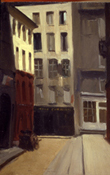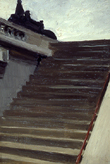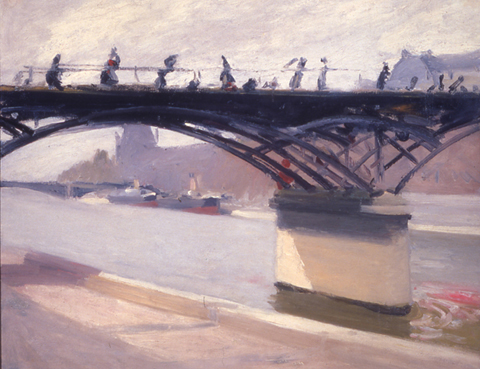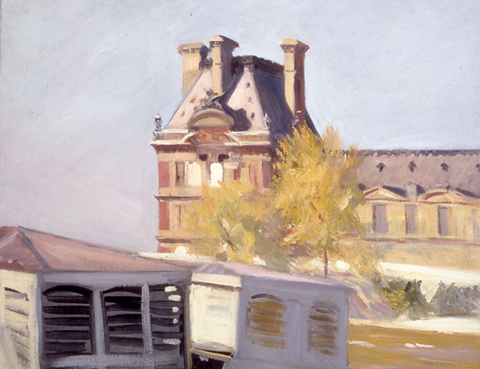|
|
|
|
|
|
|
|
|
|
|
|
|
|
|
|
|
|
|

|
Current Exhibitions Future Exhibitions Back to Exhibitions   Le Bistro or The Wine Shop, 1909; oil on canvas, 23 3/8 x 28 1/2 inches. Whitney Museum of American Art, New York; Josephine N. Hopper Bequest 70.1187  Le Quai des Grands Augustins, 1909; oil on canvas, 23 1/2 x 28 1/2 inches. Whitney Museum of American Art, New York; Josephine N. Hopper Bequest 70.1173  Notre Dame, No. 2, 1907; oil on canvas, 23 1/2 x 28 3/4 inches. Whitney Museum of American Art, New York; Josephine N. Hopper Bequest 70.1222  (Steps in Paris), 1906; oil on wood, 13 x 9 3/4 inches. Whitney Museum of American Art, New York; Josephine N. Hopper Bequest 70.1297 |
Edward Hopper: The Paris Years October 16, 2003–January 11, 2004  Le Pont des Arts, 1907; oil on canvas, 23 7/16 x 28 3/4 inches. Whitney Museum of American Art, New York; Josephine N. Hopper Bequest 70.1181 With his mysterious, light-infused paintings depicting modern life, Edward Hopper (1882–1968) has come to be known as one of the foremost painters of 20th century America. The exhibition Edward Hopper: The Paris Years brings together more than 45 paintings, drawings and watercolors from the artist's formative years between 1906 and 1910 when he made three trips to Paris—the "Capital of the Nineteenth Century" in the words of contemporary German critic Walter Benjamin (1892–1942). Unlike the other expatriate artists who embraced the works of the 20th century French avant-garde, Hopper looked towards the earlier generation of French artists, the Impressionists, whose artistic production took place primarily in the second half of the previous century. And like the literary figure flaneur of that era, Hopper enjoyed frequenting the city's cafes and museums (although, judging from the paintings he produced, he visually eschewed the crowd, unlike the flaneur who reveled in it). Hopper preferred to work independently, outdoors if possible, instead of enrolling in a French painting studio, and thus transferring onto canvas what he saw, often the city's incomparable vistas enveloped in luminous atmosphere.  Le Pavillion de Flore, 1909; oil on canvas, 23 3/4 x 28 3/4 inches. Whitney Museum of American Art, New York; Josephine N. Hopper Bequest 70.1174 Returning to New York City in 1910, he trained his eyes on the surrounding urban and natural scenes. The result was often a riveting depiction of modern alienation, the 20th century offspring of the Parisian Spleen, in the accelerated environment of the City at the cusp of becoming the capital of the 20th century. The works in this exhibition shows how critical Hopper's Paris years were in developing the unique sensibility of vision that penetrated the conditions of modern life and painterly ability that succeeded in depicting the hidden meanings of human experience in what is essentially still our times. This exhibition was organized by the Whitney Museum of American Art, New York. Funding for the exhibition at the Tyler Museum of Art has been provided by Vernon and Amy Faulconer of Tyler. |